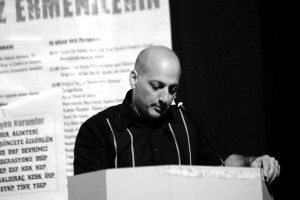The following talk was given by scholar and activist George Aghjayan in Ankara on April 25. The commemoration was co-sponsored by 18 human rights groups and political organizations from Turkey, including the Human Rights Association, Dur-De, and the leading pro-Kurdish political party HDP. The commemoration event featured remarks by writers, artists, and human rights activists from Turkey and the Armenian Diaspora. Armenian Weekly Editor Nanore Barsoumian, Seda Byurat, the great-great-granddaughter of prominent Armenian writer Smbat Byurat, co-founder and board member of the Genocide Education Project Roxanne Makasdjian, scholar Khatchig Mouradian, and Alternative Radio founder and director David Barsamian were among the speakers. Activist Sako Berberian read Daniel Varoujan’s “Andastan.”

A short distance from here, in the Chayash Bahcesi [Çayaş Bahceli] valley, the Armenian men of Stanoz were murdered in 1915. There were over 3,000 Armenians living in Stanoz, an almost entirely Armenian village. For years after the genocide of 1915, the Armenian cemetery in Stanoz remained as a silent remnant of that once-thriving community. Over the last few years, the cemetery has been looted and destroyed in a purposeful effort to wipe clean even that simple silent marker of death.
Now all that remains are our memories of the life before the great crime of 1915 and the memory of the existence of Armenians left behind, until now counted as deaths.
In 1915, Ibrahim Shah [Şah] chose to rescue the Armenian women and children of men conscripted into the Ottoman Army. He dispersed them among the Muslim villages in the district.
Today, how many are descended from these remnants of the sword [kilic artigi]? While we do not know for sure, we do know that for the past 100 years they have continued to live under persecution and discrimination. They have they lived in the same town with the perpetrators of the crime—not only as neighbors, but sometimes even in the same household.
1.5 million Armenians were murdered in 1915. What can be done today? Recognition of the crime by the Turkish government is necessary to stop the vilification of the Armenian people and the destruction of Armenian cultural sites. The Armenian identity of the “remnants of the sword” must be allowed to flourish without fear of persecution or discrimination. Today, that Armenian identity is not separate from the Muslim and Kurdish or Turkish identity, but also by a miracle it is not completely erased. In this way, we can bring back from the dead some of those 1.5 million Armenians. We demand that right in the name of our people born of this land!


what goes around comes around .God will avenge the fallen armenians.